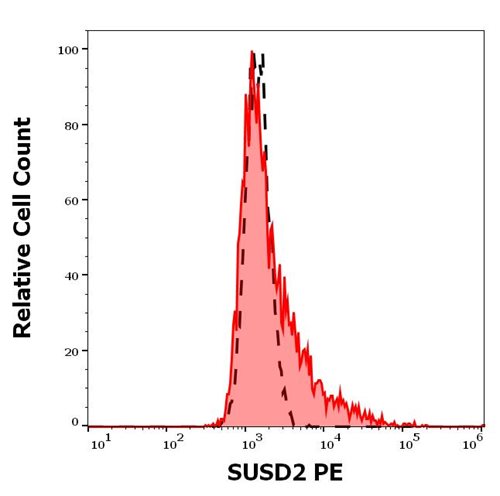Anti-GnRH-Receptor / LH-RH Receptor Monoclonal Antibody(Clone: A9E4)
Shipping Info:
For estimated delivery dates, please contact us at [email protected]
| Amount : | 100 µg |
| Isotype : | Mouse IgG1, kappa |
| Content : | 200 µg/ml of Ab Purified from Bioreactor Concentrate by Protein A/G. Prepared in 10mM PBS with 0.05% BSA & 0.05% azide. Also available WITHOUT BSA at 1.0mg/ml. |
| Storage condition : | Antibody with azide - store at 2 to 8°C. Antibody without azide - store at -20 to -80°C. Antibody is stable for 24 months. Non-hazardous. |
| Gene : | GNRHR and LHCGR |
| Gene ID : | 2798; 3973 |
| Uniprot ID : | P30968; P22888 |
| Alternative Name : | GnRH receptor, GnRH-R, GNRHR1, gonadotropin-releasing hormone (type 1) receptor 1, GRHR, HH7, leutinizing-releasing hormone receptor, LHRHR, LRHR, luliberin receptor, luteinizing hormone releasing hormone receptor, Type I GnRH receptor |
| Immunogen Information : | A synthetic peptide aa 1-29 (MANSASPEQNQHCSAINNSIPLMQGNLPY) from the N-terminal of human GnRH receptor. |
Recognizes an epitope on the extracellular domain of gonadotropin releasing hormone (GnRH) receptor or luteinizing hormone receptor (LHCGR). Lutropin (also designated luteinizing hormone) plays a role in spermatogenesis and ovulation by stimulating the testes and ovaries to produce steroids. Gonadotropin (also designated choriogonadotropin) production in the placenta maintains estrogen and progesterone levels during the first trimester of pregnancy. Ovaries and testes abundantly express luteinizing hormone/choriogonadotropin receptor. GnRH receptor contains seven hydrophobic transmembrane domains connected by hydrophilic extracellular and intracellular loops characteristic of G-protein coupled receptors. GnRH stimulates the gonadotrophs of the anterior pituitary to secrete luteinizing hormone (LH) as well as follicle-stimulating hormone (FSH). GnRH influences the protective effect of pregnancy and Gonadotropin against breast cancer. The expression of GnRH on breast carcinoma correlates in part to the degree of tumor differentiation. GnRH-positive breast tumors occur more frequently in tumors with greater cell differentiation in premenopausal women. GnRH is present in luteal and granulosa cells as well as in ovarian cell membrane preparations.
|
There are currently no product reviews
|


















.png)











